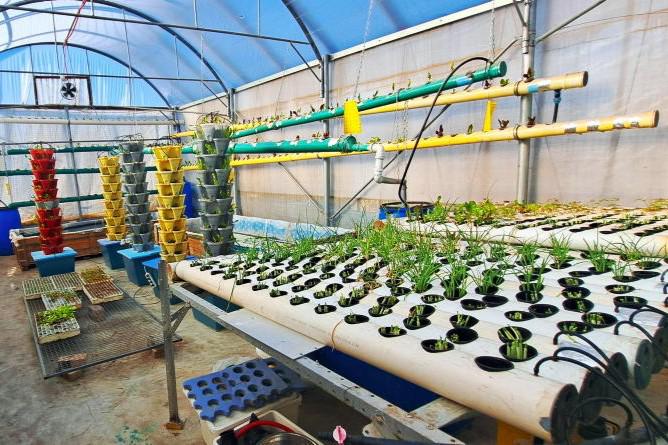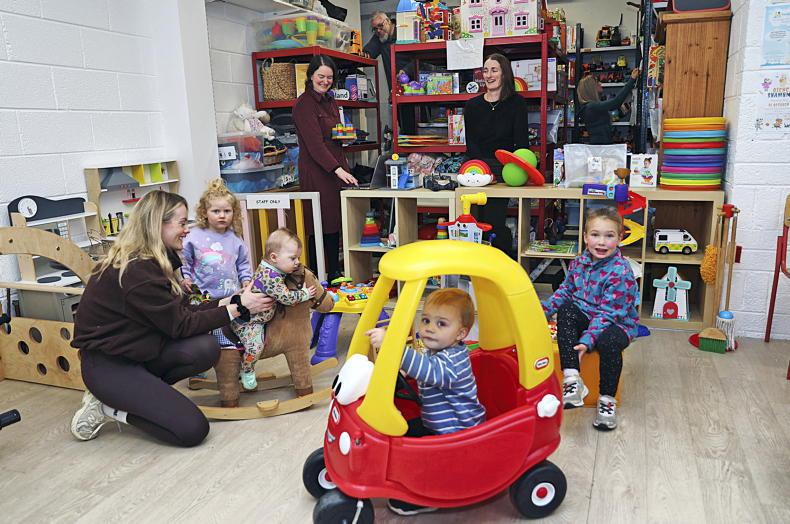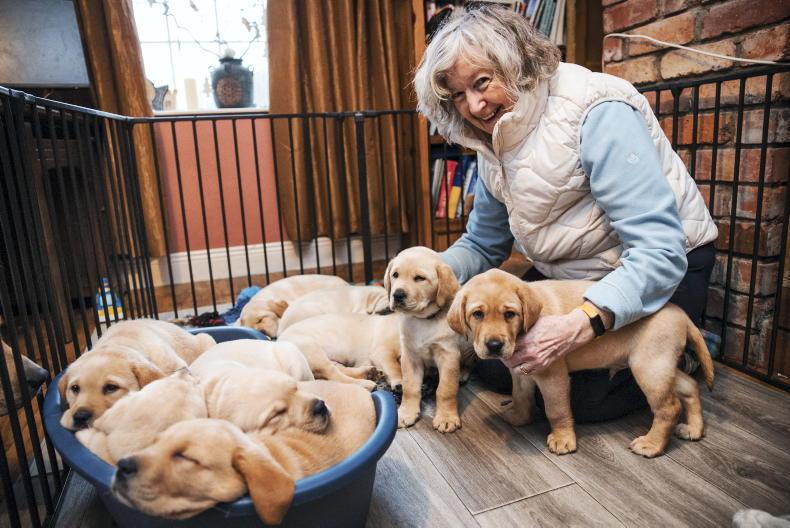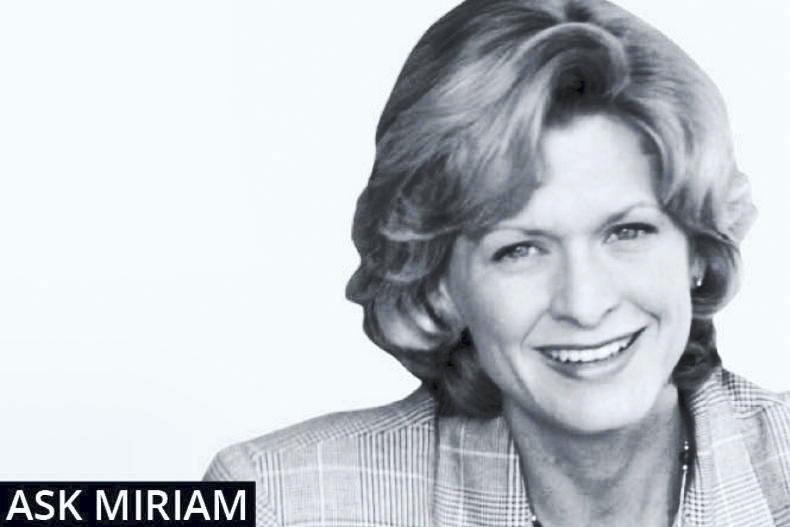What do you see from the rooftop of a refugee centre in Bethlehem? You see an amazing graffiti display, inspired and led by Banksy’s own art, to the right. To the left, you see a playground and astroturf pitches full of children and highly politicised agitprop art – there are kids and the sound of them everywhere.
And in front, you see an impressively enormous entrance to Aida refugee camp, its archway topped with a huge old-fashioned key to symbolise the right of return for these refugees, to the homes their parents or grandparents were driven out of.
Close to the archway is the tallest thing in sight – a military watchtower along the enormous separation wall.
More on that later.
And behind? Two tents of brimmingly bountiful gardens with a difference – a pair of hydroponic grow rooms where families grow their greens.
Fuad Abu Saif is the director of the Union of Agriculture Work Committees (UAWC). Providing services for over 20,000 farmers, this rooftop garden for refugees in Bethlehem is by far the most urban initiative the organisation supports.
It’s simple, really, he explains: “In the refugee camp there is no land, there is no space to plant any kind of vegetables. The only space they have is the roof of this refugee centre – so we’ve designed this hydroponics unit. We plant on water without soil because there is no soil, no land.”
UAWC provide training and equipment in hydroponic horticultural growing to over 30 families from Aida, who themselves are now seeking out places and spaces to grow in.
Thousands of refugees live in Aida in extremely cramped conditions – the population density is over 77,000 people per square kilometre. Aida is largely surrounded by the illegal separation wall and by Har Homa and Gilo, two large Israeli settlements, also illegal under international law.
Here the water, sewage and electricity are all unreliable, while there are regular military raids by Israeli forces.
The camp was established in 1950 after the Nakba (catastrophe) of 1948, where around one million Palestinian people were left under duress or driven out of their homes and villages – many of which were destroyed – from what is now Israel.
Visiting a place under siege

The orange gate which blocks Palestinians’ access to the main road in Qusra. \Oliver Moore
In December, as a member of Irish small farmer organisation Talamh Beo, I travelled to the West Bank as part of an international delegation of small farmers from La Via Campesina (LVC), an international farmers association with over 200 million members worldwide, including those in UAWC. The LVC advocates for family farm-based sustainable agriculture.
Last year, UAWC issued a plea for fellow farmers to come see for themselves what is happening regarding settler attacks and worsening military occupation.
So our delegation visited six cities: Nablus, Hebron, Ramallah, Bethlehem, Jericho and Jerusalem; four villages Qusra, and in the Jordan valley Bardala, Al Farsiya, and Jiftlik; two refugee camps Dhesheh and Aida in Bethlehem; and one school in the Masafer Yatta region near Hebron.
The hospitality of Palestinians knows no bounds. Truly we were looked after in a way reminiscent of older Irish hospitality where no one could leave your house anything other than too full.
So in the Lagee (refugee) Centre beside Aida refugee camp, we were treated to Maqluba – the upside down rice dish Palestine is famous for.
While we ate, two of the men who work in the centre told us that Aida was the most tear-gassed place per square kilometre in the world. It is also raided by the Israeli army regularly, sometimes using multi-fire tear gas units, sometimes aiming directly at people’s homes.
Having had a quite relaxed time on the top floor, I later learned that we had been trailed by a sniper from the watchtower the whole time we were on the roof.
Most of UAWC’s work is rural, so much of our time was spent in area B or C – the more rural parts of Palestine, either under the control of the Israelis (C) or joint control between Israelis and the Palestinian Authority (B).
However, it became increasingly clear during our time there that there is little authority in the Palestinian Authority. Israel is tightening its military grip, while settlers are emboldened to attack rural villages with impunity.
The UN’s OCHA (Office for the Coordination of Humanitarian Affairs) estimates that, in 2023, over 10,000 Palestinian-owned olive trees were vandalised by settlers across the West Bank.
Nablus attacks

Fuad Abu Seif is helping families to grow food on the rooftop of the Aida refugee camp. \uawc-pal.org
Some attacks are especially intense. On 18 October last, the OCHA reported that “three groups of about 200 Israeli settlers attacked Palestinian olive harvesters in Yatma village, south of Nablus”.
The Palestinian farmers were cleared by the army – who rarely interfere with the settlers even when on an attacking spree – and when the farmers returned to their land, “they found that at least 1,000 kilos of olives, 18 ladders and 50 mattresses had been stolen”.
The Nablus region has been hit especially hard in these attacks.
According to the governor of Nablus, Ghassan Daghlass, there were over 150 attacks on farmers trying to harvest their olives this year.
Agricultural adviser in Nablus, Ahmad Faris, pointed out that of the 18,500ha of agricultural land in the region, 2,200ha were inaccessible in 2023 became of occupation restrictions, including settler attacks.
The year 2024 saw a slight improvement in the harvest, with 1,100ha inaccessible, thanks in part to the bravery of 45 internationals who came to help protect the harvest.
Farming was very important for livelihoods, but it is disappearing. The attacks by the occupation have intensified these last two years
Qusra was the first rural village we visited. The tension and desperation farmers and their families faced was palpable.
Hani Oudeh, mayor of the municipality, pointed to a young farmer at our meeting – Abdul Hakeem Abu Wadi – who had been beaten up two days previously.
In October 2023, his brother and his brother’s son were killed by settlers who attacked the funeral of four other farmers who had been killed by settlers the previous day.
The initial attack in Qusra was on the house of Maad Awda (29). His father Mahmoud was killed during a similar attack in 2017.
A week after we left, another person was shot dead by the Israeli army in Qusra, while a baby and toddler suffered tear-gas inhalation.
“This used to be a prosperous place,” Hani Oudeh says. “Farming was very important for livelihoods, but it is disappearing. The attacks by the occupation have intensified these last two years.”
“Now it is the season for ploughing the land, to clear the weeds and get the water down. But the Israelis won’t let us access our land to take care of it,” he adds.

Mayor of the Qusra municipality, Hani Oudeh, says Palestinians cannot farm in the region anymore. \ la via campesina
Qusra is surrounded by six settlements. “They insult us, hit us with the butt of a gun. They fire tear-gas and shoot at us,” he says.
We walked around Qusra with a group of farmers who showed us what they were experiencing. One farmer with a 5,000-bird intensive chicken farm spoke of the electricity being cut off for the unit by settlers when the birds were at maturity. He was prevented from accessing the unit. The birds died.
Another pointed to barriers blocking access to his land. These were put down by settlers, who had taken his land, destroyed his olive trees and planted their own vines there instead. They had a new road built to access the vines from their settlement, while Palestinian access was cut off.
Everywhere Palestinians’ ability to move around is blocked. Qusra now has an enormous new orange gate, blocking access to the main road and creating a long round trip to come and go anywhere.
As we stood with the farmers at the gate barrier, we could see the perfect road with expensive cars for settlers only, easily accessing the motorway.
We saw one white car more than once, so I got the feeling we were being scoped out. We were. The army turned up five minutes later to clear us. For just standing at a gate. The situation was getting more and more tense, as, along with ourselves and the farmers, some local youths had also started to gather.
There is a fine balance between helping with solidarity and causing trouble for people later, so, after a suitable time negotiating, we took guidance from our hosts and slowly, carefully left.
The farmers of Qusra have no such luxury.
Gaza ceasefire: what we know
A tentative ceasefire between Israel and Hamas has begun after 15 months of devastation. Mediated by Egypt, Qatar, and the United States, the deal which came into force on Sunday last, includes phased captive exchanges, troop withdrawals, repopulating the north and increased humanitarian aid.The first six week phase prioritises women, children, the wounded and the elderly, with 33 Israeli hostages exchanged for 100 Palestinian prisoners by 1 March. Israeli troops gradually withdraw, while Palestinians start returning to Gaza’s north.Phase two includes the release of remaining hostages and 1,000 Palestinian prisoners, further troop withdrawals, and a permanent ceasefire by 9 March.Phase three is unclear, with reconstruction and political issues unresolved.Despite the agreement, violence continues, with hostilities in the West Bank – where the ceasefire does not apply - and dozens killed in Gaza by Israeli missile attacks immediately after the ceasefire announcement. The situation remains volatile.
What do you see from the rooftop of a refugee centre in Bethlehem? You see an amazing graffiti display, inspired and led by Banksy’s own art, to the right. To the left, you see a playground and astroturf pitches full of children and highly politicised agitprop art – there are kids and the sound of them everywhere.
And in front, you see an impressively enormous entrance to Aida refugee camp, its archway topped with a huge old-fashioned key to symbolise the right of return for these refugees, to the homes their parents or grandparents were driven out of.
Close to the archway is the tallest thing in sight – a military watchtower along the enormous separation wall.
More on that later.
And behind? Two tents of brimmingly bountiful gardens with a difference – a pair of hydroponic grow rooms where families grow their greens.
Fuad Abu Saif is the director of the Union of Agriculture Work Committees (UAWC). Providing services for over 20,000 farmers, this rooftop garden for refugees in Bethlehem is by far the most urban initiative the organisation supports.
It’s simple, really, he explains: “In the refugee camp there is no land, there is no space to plant any kind of vegetables. The only space they have is the roof of this refugee centre – so we’ve designed this hydroponics unit. We plant on water without soil because there is no soil, no land.”
UAWC provide training and equipment in hydroponic horticultural growing to over 30 families from Aida, who themselves are now seeking out places and spaces to grow in.
Thousands of refugees live in Aida in extremely cramped conditions – the population density is over 77,000 people per square kilometre. Aida is largely surrounded by the illegal separation wall and by Har Homa and Gilo, two large Israeli settlements, also illegal under international law.
Here the water, sewage and electricity are all unreliable, while there are regular military raids by Israeli forces.
The camp was established in 1950 after the Nakba (catastrophe) of 1948, where around one million Palestinian people were left under duress or driven out of their homes and villages – many of which were destroyed – from what is now Israel.
Visiting a place under siege

The orange gate which blocks Palestinians’ access to the main road in Qusra. \Oliver Moore
In December, as a member of Irish small farmer organisation Talamh Beo, I travelled to the West Bank as part of an international delegation of small farmers from La Via Campesina (LVC), an international farmers association with over 200 million members worldwide, including those in UAWC. The LVC advocates for family farm-based sustainable agriculture.
Last year, UAWC issued a plea for fellow farmers to come see for themselves what is happening regarding settler attacks and worsening military occupation.
So our delegation visited six cities: Nablus, Hebron, Ramallah, Bethlehem, Jericho and Jerusalem; four villages Qusra, and in the Jordan valley Bardala, Al Farsiya, and Jiftlik; two refugee camps Dhesheh and Aida in Bethlehem; and one school in the Masafer Yatta region near Hebron.
The hospitality of Palestinians knows no bounds. Truly we were looked after in a way reminiscent of older Irish hospitality where no one could leave your house anything other than too full.
So in the Lagee (refugee) Centre beside Aida refugee camp, we were treated to Maqluba – the upside down rice dish Palestine is famous for.
While we ate, two of the men who work in the centre told us that Aida was the most tear-gassed place per square kilometre in the world. It is also raided by the Israeli army regularly, sometimes using multi-fire tear gas units, sometimes aiming directly at people’s homes.
Having had a quite relaxed time on the top floor, I later learned that we had been trailed by a sniper from the watchtower the whole time we were on the roof.
Most of UAWC’s work is rural, so much of our time was spent in area B or C – the more rural parts of Palestine, either under the control of the Israelis (C) or joint control between Israelis and the Palestinian Authority (B).
However, it became increasingly clear during our time there that there is little authority in the Palestinian Authority. Israel is tightening its military grip, while settlers are emboldened to attack rural villages with impunity.
The UN’s OCHA (Office for the Coordination of Humanitarian Affairs) estimates that, in 2023, over 10,000 Palestinian-owned olive trees were vandalised by settlers across the West Bank.
Nablus attacks

Fuad Abu Seif is helping families to grow food on the rooftop of the Aida refugee camp. \uawc-pal.org
Some attacks are especially intense. On 18 October last, the OCHA reported that “three groups of about 200 Israeli settlers attacked Palestinian olive harvesters in Yatma village, south of Nablus”.
The Palestinian farmers were cleared by the army – who rarely interfere with the settlers even when on an attacking spree – and when the farmers returned to their land, “they found that at least 1,000 kilos of olives, 18 ladders and 50 mattresses had been stolen”.
The Nablus region has been hit especially hard in these attacks.
According to the governor of Nablus, Ghassan Daghlass, there were over 150 attacks on farmers trying to harvest their olives this year.
Agricultural adviser in Nablus, Ahmad Faris, pointed out that of the 18,500ha of agricultural land in the region, 2,200ha were inaccessible in 2023 became of occupation restrictions, including settler attacks.
The year 2024 saw a slight improvement in the harvest, with 1,100ha inaccessible, thanks in part to the bravery of 45 internationals who came to help protect the harvest.
Farming was very important for livelihoods, but it is disappearing. The attacks by the occupation have intensified these last two years
Qusra was the first rural village we visited. The tension and desperation farmers and their families faced was palpable.
Hani Oudeh, mayor of the municipality, pointed to a young farmer at our meeting – Abdul Hakeem Abu Wadi – who had been beaten up two days previously.
In October 2023, his brother and his brother’s son were killed by settlers who attacked the funeral of four other farmers who had been killed by settlers the previous day.
The initial attack in Qusra was on the house of Maad Awda (29). His father Mahmoud was killed during a similar attack in 2017.
A week after we left, another person was shot dead by the Israeli army in Qusra, while a baby and toddler suffered tear-gas inhalation.
“This used to be a prosperous place,” Hani Oudeh says. “Farming was very important for livelihoods, but it is disappearing. The attacks by the occupation have intensified these last two years.”
“Now it is the season for ploughing the land, to clear the weeds and get the water down. But the Israelis won’t let us access our land to take care of it,” he adds.

Mayor of the Qusra municipality, Hani Oudeh, says Palestinians cannot farm in the region anymore. \ la via campesina
Qusra is surrounded by six settlements. “They insult us, hit us with the butt of a gun. They fire tear-gas and shoot at us,” he says.
We walked around Qusra with a group of farmers who showed us what they were experiencing. One farmer with a 5,000-bird intensive chicken farm spoke of the electricity being cut off for the unit by settlers when the birds were at maturity. He was prevented from accessing the unit. The birds died.
Another pointed to barriers blocking access to his land. These were put down by settlers, who had taken his land, destroyed his olive trees and planted their own vines there instead. They had a new road built to access the vines from their settlement, while Palestinian access was cut off.
Everywhere Palestinians’ ability to move around is blocked. Qusra now has an enormous new orange gate, blocking access to the main road and creating a long round trip to come and go anywhere.
As we stood with the farmers at the gate barrier, we could see the perfect road with expensive cars for settlers only, easily accessing the motorway.
We saw one white car more than once, so I got the feeling we were being scoped out. We were. The army turned up five minutes later to clear us. For just standing at a gate. The situation was getting more and more tense, as, along with ourselves and the farmers, some local youths had also started to gather.
There is a fine balance between helping with solidarity and causing trouble for people later, so, after a suitable time negotiating, we took guidance from our hosts and slowly, carefully left.
The farmers of Qusra have no such luxury.
Gaza ceasefire: what we know
A tentative ceasefire between Israel and Hamas has begun after 15 months of devastation. Mediated by Egypt, Qatar, and the United States, the deal which came into force on Sunday last, includes phased captive exchanges, troop withdrawals, repopulating the north and increased humanitarian aid.The first six week phase prioritises women, children, the wounded and the elderly, with 33 Israeli hostages exchanged for 100 Palestinian prisoners by 1 March. Israeli troops gradually withdraw, while Palestinians start returning to Gaza’s north.Phase two includes the release of remaining hostages and 1,000 Palestinian prisoners, further troop withdrawals, and a permanent ceasefire by 9 March.Phase three is unclear, with reconstruction and political issues unresolved.Despite the agreement, violence continues, with hostilities in the West Bank – where the ceasefire does not apply - and dozens killed in Gaza by Israeli missile attacks immediately after the ceasefire announcement. The situation remains volatile. 











SHARING OPTIONS